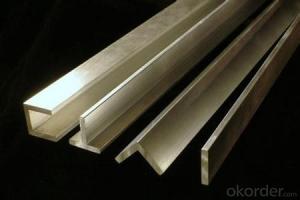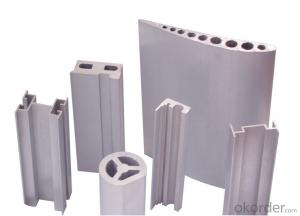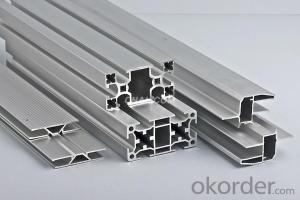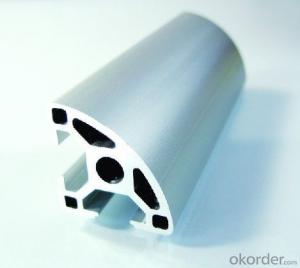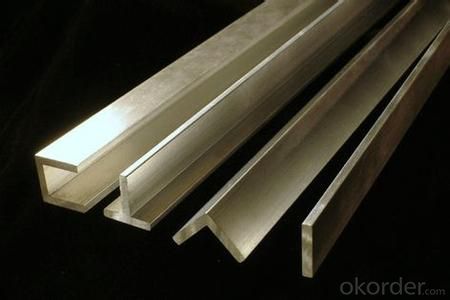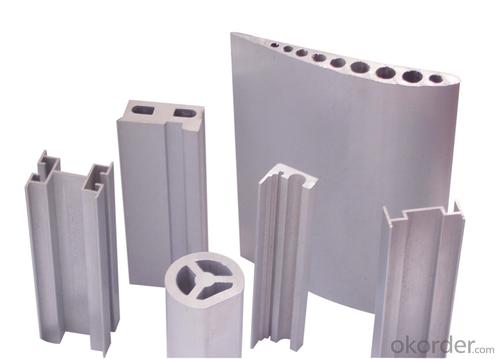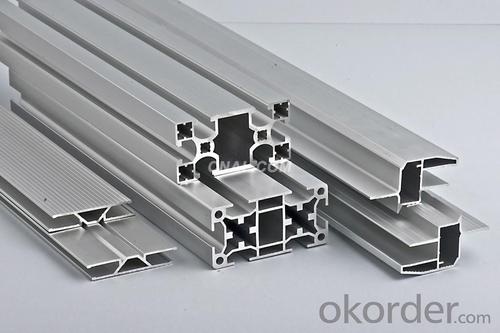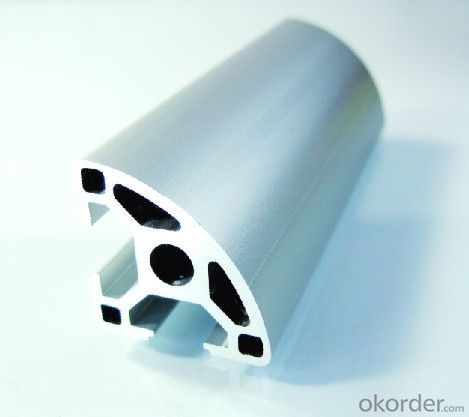Japanese Architectural Aluminum Extrusion Profiles
OKorder Service Pledge
OKorder Financial Service
You Might Also Like
Aluminium is a relatively soft, durable, lightweight, ductileand malleablemetalwith appearance ranging from silvery to dull gray, depending on the surfaceroughness. It is nonmagnetic and does not easily ignite. A fresh film ofaluminium serves as a good reflector (approximately 92%) of visible lightand an excellent reflector (as much as 98%) of medium and far infraredradiation. The yield strength of pure aluminium is 7–11 MPa,while aluminium alloys have yield strengths ranging from200 MPa to 600 MPa. Aluminium has about one-third the densityand stiffness of steel. It is easily machined,cast, drawn and extruded.
Features:
Material | Alloy 6063,6061,6005or according to customer’s choice |
Temper | T3, T4, T5, T6 |
Surface | Anodize, electrophoresis, powder coating, PVDF coating, wood grain painting, matted, etc. |
Length | Coating 6.5 meters, Anodizing 6.5 meters, Mill finish 5 meters |
Application | Industrial, electrical equipment(TV set, air conditioner, refrigerator, computer), decoration,construction, transportation |
Custom Made | We can package following with customer's request. |
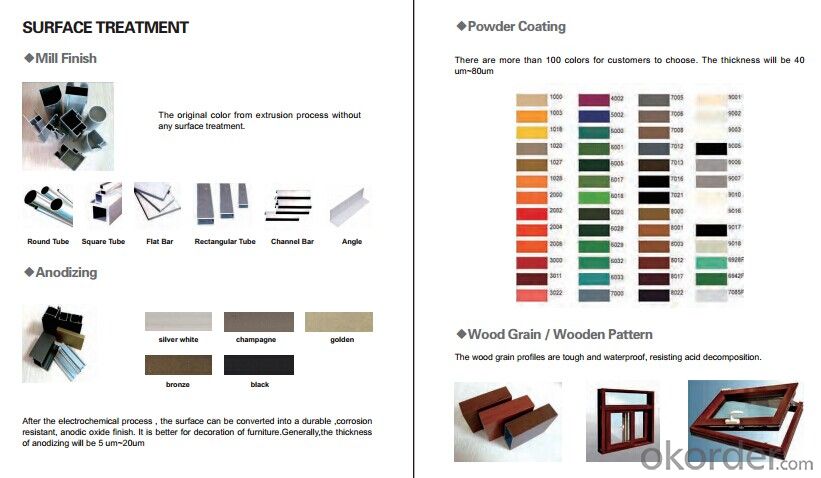
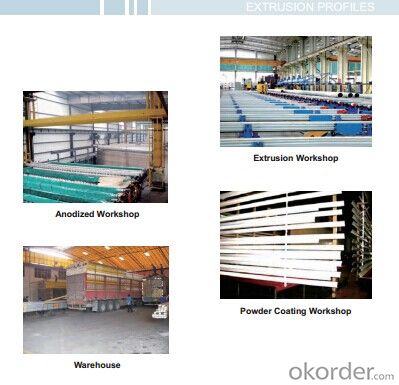
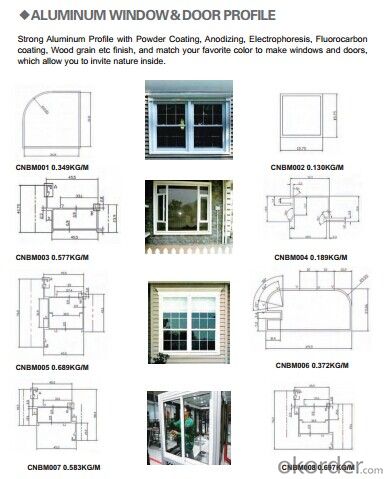

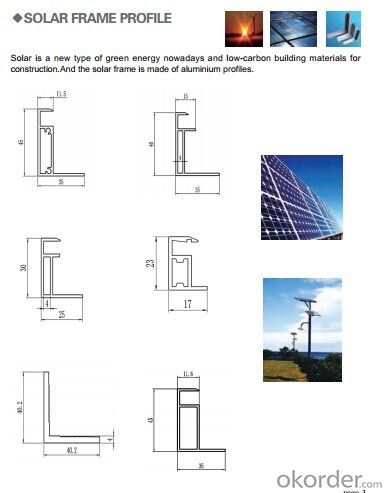
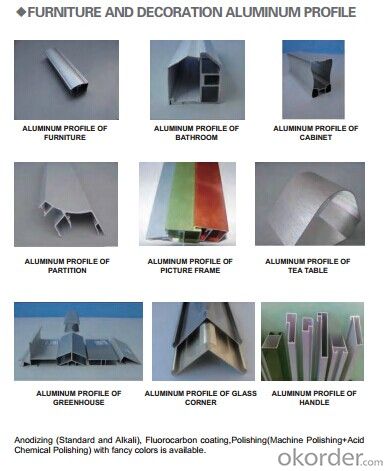
- Q: Can you quote me one according to the current market situation?
- Aluminum: aluminum ingot + processing fee + Spray + heat insulationAluminum plate: square meter, unit price (depending on thickness) + spraying, etc.You cannot quote without specific parameters
- Q: Can aluminum profiles be utilized in creating distinctive architectural structures?
- <p>Yes, aluminum profiles can be used to create unique architectural designs. They are favored for their strength, lightweight, and corrosion resistance. Architects can utilize aluminum's flexibility to design complex structures, such as intricate facades, modern window systems, and innovative support frameworks. Aluminum's adaptability allows for both functional and aesthetically pleasing designs, making it a popular choice in contemporary architecture.</p>
- Q: Can aluminum profiles be used in lighting fixture manufacturing?
- Aluminum profiles are indeed suitable for the manufacturing of lighting fixtures. In the lighting industry, aluminum is widely employed because of its many advantageous qualities. It possesses light weight, durability, and corrosion resistance, which make it perfect for both indoor and outdoor lighting fixtures. By easily molding and manipulating aluminum profiles, one can create diverse designs and forms, thereby enabling innovative and imaginative lighting solutions. Moreover, these profiles can be coated or anodized, thereby enhancing their visual appeal and providing extra protection against damage. All in all, due to their versatility, functionality, and aesthetic appeal, aluminum profiles are highly favored in the manufacturing of lighting fixtures.
- Q: What are the advantages of using aluminum profiles in the defense industry?
- Using aluminum profiles in the defense industry offers several benefits. Firstly, they have a high strength-to-weight ratio, meaning they are strong and durable while remaining lightweight. This is crucial in the defense industry, where reducing weight is important for improving mobility and saving fuel. Secondly, aluminum profiles have exceptional corrosion resistance. This is advantageous in defense applications where equipment is exposed to harsh environments like saltwater or extreme weather. The corrosion resistance ensures the equipment remains functional and reliable for long periods, reducing maintenance needs and increasing component lifespan. Additionally, aluminum profiles are highly malleable and can be easily shaped into complex designs. This versatility allows for greater design flexibility in defense applications, creating intricate and customized components. Moreover, aluminum profiles can be easily combined with other materials like composites or steel, expanding their potential uses in the defense industry. Another advantage of aluminum profiles is their excellent thermal conductivity. Compared to other metals, aluminum has a high thermal conductivity, enabling efficient heat dissipation in defense equipment. This is crucial in applications where thermal management is critical, such as electronic systems or high-performance vehicles. Effective heat dissipation ensures the reliability and longevity of sensitive components. Lastly, aluminum is a widely available and cost-effective material. It is abundant in nature and can be easily extracted, making it readily accessible for defense manufacturing. Furthermore, its lower cost compared to metals like titanium or steel makes it an economical choice for defense applications. This allows for cost-effective production of large quantities of components without compromising quality or performance. In conclusion, the advantages of using aluminum profiles in the defense industry include their high strength-to-weight ratio, corrosion resistance, versatility in fabrication, excellent thermal conductivity, and cost-effectiveness. These characteristics make aluminum profiles an ideal choice for various defense applications, contributing to enhanced performance, durability, and cost-efficiency in this critical sector.
- Q: What are the different surface treatment options available for aluminum profiles?
- There are several surface treatment options available for aluminum profiles, each offering unique benefits and enhancing their appearance and performance. Some of the common surface treatments for aluminum profiles include: 1. Anodizing: Anodizing is a popular surface treatment method that creates a protective oxide layer on the aluminum surface. It offers excellent corrosion resistance, durability, and can be made in various colors. Anodized aluminum profiles are commonly used in architectural, automotive, and aerospace applications. 2. Powder coating: Powder coating involves applying a dry powder to the aluminum surface and then curing it with heat. This process creates a tough, decorative, and protective layer that enhances the profile's durability, scratch resistance, and weatherability. Powder-coated aluminum profiles are widely used in the construction industry due to their aesthetic appeal and resistance to fading. 3. Electrophoretic coating: Also known as electrocoating or e-coating, this process involves immersing the aluminum profile in a bath of paint and applying an electric current to deposit the paint particles uniformly. Electrophoretic coating provides excellent corrosion resistance, uniform thickness, and a smooth finish. It is commonly used in the automotive and electronics industries. 4. Mechanical finishing: Mechanical finishing techniques, such as brushing or polishing, are used to enhance the appearance and smoothness of aluminum profiles. Brushing creates a brushed or satin finish, while polishing creates a mirror-like, reflective surface. These finishes are often applied to decorative or architectural aluminum profiles. 5. Chemical etching: Chemical etching involves selectively removing material from the aluminum surface using an acid or chemical solution. This process can create decorative patterns, logos, or text on the profile's surface. Chemical etching is commonly used for branding or aesthetic purposes in various industries. 6. Plating: Plating is the process of depositing a thin layer of metal, such as chrome or nickel, onto the aluminum surface. This treatment enhances the appearance, corrosion resistance, and wear resistance of aluminum profiles. Plated aluminum profiles are often used in the automotive, electronics, and decorative industries. It's important to note that the choice of surface treatment depends on the specific requirements of the application, such as aesthetics, durability, corrosion resistance, or conductivity. Consulting with a professional or supplier can help determine the most suitable surface treatment option for aluminum profiles based on your needs.
- Q: Are aluminum profiles suitable for high-temperature environments?
- Aluminum profiles are generally unsuitable for environments with high temperatures. Despite its excellent thermal conductivity and lightweight nature, aluminum has a lower melting point compared to other metals. At temperatures exceeding 400°C (752°F), aluminum begins to soften and can eventually lose its structural integrity. In high-temperature surroundings, aluminum profiles can experience deformation, distortion, or even complete failure. This can jeopardize the stability and functionality of any structure or system relying on aluminum profiles. Nevertheless, there exist specific aluminum alloys that are specifically engineered to withstand higher temperatures. Alloys like 6061 and 7075 have enhanced heat resistance and can endure higher temperatures without significant damage. These specialized alloys are commonly employed in applications requiring resistance to elevated temperatures, such as aerospace components or certain industrial processes. However, it is essential to thoroughly evaluate the temperature requirements of a given environment before utilizing aluminum profiles. In extremely high-temperature settings, alternative materials like steel or refractory metals may be more appropriate due to their higher melting points and superior heat resistance properties.
- Q: Can aluminum profiles be used in exhibition booth and stand manufacturing?
- Yes, aluminum profiles can be commonly used in exhibition booth and stand manufacturing. Aluminum profiles are lightweight, durable, and versatile, making them an ideal choice for constructing modular structures for exhibition booths and stands. It allows for easy assembly, disassembly, and customization, offering flexibility to accommodate different booth designs and layouts. Additionally, aluminum profiles provide a sleek and professional appearance, making them a popular choice in the exhibition industry.
- Q: What role does glass curtain wall aluminum profile holder play?
- The subframe is formed by connecting the silicone structural adhesive with the glass and then connecting the plate with the aluminum alloy through the platen. The purpose of the subframe is to achieve the "hidden frame" purpose
- Q: This question asks about the impact of aluminum profiles on the sound insulation properties of a building.
- <p>Aluminum profiles can significantly affect the sound insulation of a building. They are often used in construction for their strength and lightweight properties. However, aluminum is a good conductor of sound, which can lead to sound transmission through the building structure. To enhance sound insulation, aluminum profiles are often combined with soundproofing materials such as acoustic foam or rubber seals. These materials help to absorb or block sound waves, reducing noise transmission. Additionally, the design and installation of aluminum profiles can also impact sound insulation; proper sealing and insulation techniques are crucial to minimize sound leakage.</p>
- Q: Are aluminum profiles suitable for automotive racks and carriers?
- Yes, aluminum profiles are suitable for automotive racks and carriers. Aluminum is a lightweight and durable material that can withstand the demands of carrying heavy loads while maintaining structural integrity. It also has excellent corrosion resistance properties, making it ideal for outdoor use and exposure to different weather conditions. Additionally, aluminum profiles can be easily customized and designed to meet specific requirements, allowing for versatility in the design and construction of automotive racks and carriers.
Send your message to us
Japanese Architectural Aluminum Extrusion Profiles
OKorder Service Pledge
OKorder Financial Service
Similar products
Hot products
Hot Searches
Related keywords
